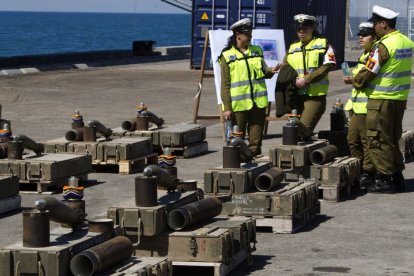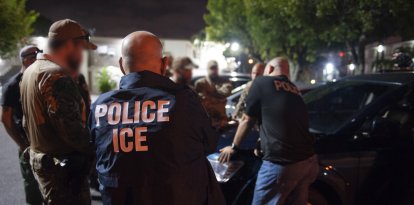Firearms smuggling to the Caribbean and Latin America increased by 120% between 2020 and 2023
Institutions studying this phenomenon point out that greater border control is necessary to reduce smuggling to unstable regions with high crime rates.

Military confiscates shipment of weapons
More and more firearms are being smuggled from the United States to Caribbean and Hispanic American countries. This is one of the conclusions that can be drawn from the latest Small Arms Survey report, according to which, from 2020 to 2023, seizures of smuggled weapons have increased by 120% over the previous period.
This increase in firearms smuggling could have contributed, to some extent, to the increase in lack of public safety in the countries of these regions. A clear example of this would be Haiti, where criminal gangs have put the legitimate government in check and dominate the streets of major cities.
They do so with firearms. Rifles, shotguns and pistols, with which they assault the complexes of the institutions and rule with more authority than the State. However, in Haiti there is no industry that produces the weapons used in this lack of law and order.
According to the study, of the 626 firearms confiscated in shipments destined for the Caribbean, only 6% were rifles, compared to 35% of the firearms in shipments to Latin America. Most of these rifles were destined for Mexico, where gun crime is also on the rise. Mexico is, according to the study, the main destination for firearms, accounting for 2,592 of the 3,338 weapons seized.
AK-47 type models, the most common
This type of firearm has become a favorite for smuggling organizations over the years, even ahead of the type of model preferred by Americans, the AR-15.
The Caribbean in the spotlight
But today, it is the Caribbean region that is of particular concern to the federal government. In October of this year, the Government Accountability Office (GAO), released a report to lawmakers outlining this danger to the neighboring region.
As a result of this report, the GAO issued a series of strong recommendations to lawmakers to increase measures to combat firearms smuggling. These measures are strongly related to border control.
According to the GAO, virtually all of the firearms that have ended up in Caribbean countries come from the United States. The criminals in Caribbean countries traffic firearms by air and sea using a variety of concealment techniques and are able to obtain firearms through illegal markets.
To help disrupt and combat firearms trafficking, the GAO recommended the Departments of State, Justice, Homeland Security and Commerce to implement various training, investigative and border security initiatives.
By sea and air
To traffic arms to South America, the institute's data indicate that most shipments were made by air. When the destination was Mexico, private land vehicles were the preferred method.
Maritime shipments to the Caribbean only accounted for just over a third of all seizures and were second only to commercial air transport seizures. Even fewer seizures destined for Latin America occurred on maritime vessels, which accounted for only 13% of all seizures.
The report collects enough information to show that arms trafficking to Mexico is attempted anyway. Seizures of weapons transported by bus, bicycle, postal mail, and even on foot were recorded.
RECOMMENDATION





















